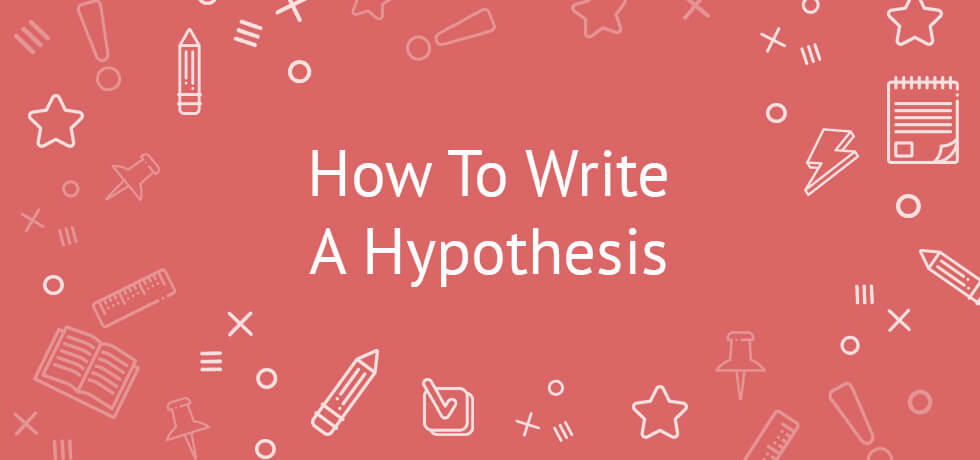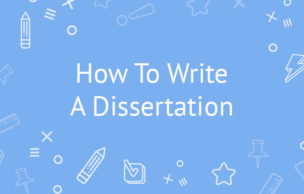How to Write a Hypothesis
The term of hypothesis is used to refer to an explanation of a model in the natural world or a clarification of an occurrence which can be analyzed by scrutiny and experimentation. In scientific studies, hypotheses are generally utilized as preliminary, experimental and verifiable assertions which clarify an occurrence identified in the natural world. This particular type of assertion is referred to as an explanatory hypothesis. Nevertheless, a hypothesis can also represent an assertion that reports a discovered natural model, which is known as a generalizing hypothesis. A hypothesis may lead to a prediction. A prediction is an assertion which suggests that a particular factor will exert an influence on or determine a transformation in a different factor, as part of the outcome of a coordinated trial. Nevertheless, a lot of scientific works support the misconception that a hypothesis represents nothing more than an informed supposition and that a hypothesis and a prediction are one and the same thing. Read on to learn more about this false notion.
A lot of areas of study, like physical sciences, social sciences or life sciences, utilize hypothesis experimentation as a method of evaluating concepts to increase the level of understanding of nature and promote scientific comprehension. Regardless of your academic level, acknowledging the meaning of a hypothesis and being capable of coming up with your own hypotheses and predictions is of the essence. In case you don’t know where to start, take a look at our complete guide.
Getting Ready to Devise a Hypothesis
- Choose a subject. Select a subject that you’re interested in and you wish to learn more about. In case you need to devise a hypothesis for a high school or university class, the subject may already be established.
- Browse through available research. Collect as much data as possible on the subject you’ve chosen. You are required to become proficient in the field and gain a high level of knowledge on the subject.
Concentrate on academic and scholastic publications. You must make sure that the data is objective, precise and thorough.
Some good places to look for information are textbooks, the Internet, and the library. School students may also ask their teachers, librarians or fellow-students to assist them.
- Examine the written works. Take some time to browse through the sources you’ve gathered. Throughout this process, you should attempt to identify and write down unresolved issues in the literature, as they may offer excellent ideas for subjects to examine.
For instance, let’s say you want to study the outcomes of nicotine on the human organism. However, you observe that no research has approached the issue of whether or not nicotine has distinct effects on men in comparison to women. This could represent the subject of your hypothesis. Or, let’s say you want to conduct research on organic farming and you observe that no scientists have examined the differences between organic and non-organic fertilizers.
If you study the available written works, you can often discover gaps. To do so, search for assertions like “no one knows” or areas in which data is obviously scarce. You might also come across affirmations that appear to be implausible, or unrealistic, such as the idea that nicotine stimulates certain abilities. In case the affirmation can be tested, you could bring a valuable contribution to your study community by carrying out your own research. If you manage to validate the assertion, it will become even more plausible. If you fail to find arguments to back up the affirmation, you will aid in rectifying a false scientific assumption.
Analyzing such questions offers you a great opportunity of standing out by covering substantial holes in an area of research.
- Come up with questions. Once you finish examining the written works on your specific subject, you need to come up with at least one unresolved issue you’d like to investigate further, which is referred to as a research question.
Considering the instances presented earlier, you might generate the following questions: “In which way does nicotine influence the organism of a man in comparison to that of a woman?” or “In which way does organic fertilizer differ from the non-organic one?”. From this point on, your target will be to respond to the research questions.
- Search for hints that might indicate the response. After coming up with the study question(s), examine the written works to check if the available results and/or assumptions regarding the subject offer any hints which might have the potential of enabling you to find responses to those questions. Such hints can constitute the starting point of your hypothesis.
Developing on the examples above, let’s say you detect a paradigm that certain varieties of stimulants appear to be influencing men more than women. If that is the case, this could constitute a hint that the same paradigm might be accurate for nicotine. Correspondingly, let’s say you detect a model that non-organic fertilizer appears to have a connection to bigger vegetables in general. If that is the case, you could clarify this paradigm using the hypothesis that vegetables exposed to non-organic fertilizer increase in size more rapidly in comparison to those exposed to organic fertilizer.
Devising the Hypothesis
Establish the variables. A generalizing hypothesis explains a paradigm you believe may occur amongst two variables: an autonomous variable and a contingent variable. In case your tests validate the paradigm, you can choose to propose a motive for which the paradigm occurs or an instrument which produces the paradigm. The motive or instrument you propose represents an explanatory hypothesis.
You can picture the autonomous variable as the element which is responsible for the emergence of a type of discrepancy or impact. As per the first example described earlier, the autonomous variable would be gender, i.e. whether an individual is a man or a woman. In the second example, the independent variable would be fertilizer type, that is to say, whether the fertilizer is organic or non-organic.
The contingent variable constitutes the variable which is conditioned by the autonomous variable. In the instances presented earlier, the contingent variable would be the assessed influence of nicotine or fertilizer.
Your hypothesis ought to propose a single connection. Most significantly, you need to include a single autonomous variable. In case you approach a larger number of variables, you won’t succeed in establishing which of the variables is responsible for the outcomes you might notice.

Produce a straightforward hypothesis
After you finish contemplating your study question and variables, note your original perspective on the way in which the variables could interconnect as a straightforward declaratory assertion.
At this stage, you shouldn’t concern yourself too much with accuracy or particularities.
In the first example, your hypothesis would be made of an assertion regarding whether an individual’s gender could exert an influence on the manner in which their organism responds to nicotine. In other words, your hypothesis might look like this: “an individual’s gender is connected to the manner in which nicotine impacts their pulse.” In the second example, you would devise a universal assertion regarding vegetable development and fertilizer, such as “vegetables exposed to distinct varieties of fertilizer have distinct dimensions because they have distinct development paces.”
Choose a course
Depending on the assignment, your hypothesis may be either directional or non-directional. Non-directional hypotheses merely assert the fact that a particular variable exerts an influence on the other. However, such hypotheses don’t state the particular influence exerted by the variable. On the other hand, directional hypotheses offer more details regarding the character (or “course”) of the connection. These hypotheses shed light on the particular way in which a variable influences the other.
As per the examples presented above, we could formulate the following non-directional hypotheses: “An individual’s gender is linked to the way in which nicotine intensifies their pulse” and “The variety of fertilizer is connected to the growth rate of vegetables.”
Based on these hypotheses, we could devise the following directional predictions: “Women will undergo a bigger intensification in pulse after inhaling nicotine in comparison to men” and “Vegetables on which non-organic fertilizer is applied will develop more rapidly as compared to vegetables on which organic fertilizer is applied.” As you can probably observe, the aforementioned hypotheses and the predictions derived from them constitute very distinct types of assertions, a difference which we shall examine further below.
In the eventuality that the literary works offer a foundation for formulating a directional prediction, it would be recommended to opt for this alternative, as it supplies a larger amount of information. Non-directional predictions are usually regarded as inappropriate, particularly when dealing with physical sciences.
Get particular
After you decide on a general perspective for your essay, you need to begin elaborating. The hypotheses must be as accurate as possible, so as to clarify precisely which notions you’ll be putting to the test. Moreover, your predictions also need to be particular and quantifiable, so as to supply proof of the connection between the variables.
If necessary, delineate the group (for instance, the individuals or objects) regarding which you expect to discover new information. For example, let’s say you’re solely concerned with the influence exerted by nicotine on senior individuals. If that is the case, your prediction could look like this: “Women who are over 65 years old will undergo a bigger intensification in pulse in comparison to men who are over 65 years old”. On the other hand, if you wanted to study solely the way in which fertilizer impacts eggplants, your prediction could look like this: “Eggplants on which non-organic fertilizer is applied will develop at a quicker rate in comparison to eggplants on which organic fertilizer is applied.”
Verify if your hypothesis can be tested
Your hypothesis needs to propose either a connection amongst two variables or a motive for which those variables are connected. The connection or the motive must be easy to notice and evaluate in the concrete and noticeable surroundings.
For instance, it would be unadvisable to formulate a hypothesis such as “Purple is the most beautiful nuance,” as such an assertion represents a personal viewpoint and cannot be verified using an experiment. Nevertheless, suggesting the extrapolating hypothesis that purple constitutes the most notorious nuance is a good idea, as such a hypothesis may be verified using a plain random poll. In case you manage to validate the notion that purple constitutes the most notorious nuance, the next phase of your work could involve asking “Why does purple represent the most notorious nuance?”. The response you suggest constitutes your explanatory hypothesis.
In a lot of cases, hypotheses are asserted as if-then phrases. For instance: “if youngsters are given nicotine then their pulses will escalate.” Such an assertion does not constitute a hypothesis. This type of assertion represents a succinct presentation of an investigational technique, succeeded by a prediction. In science education, such a statement is often mistaken for a hypothesis. To be able to easily formulate a hypothesis for this technique and prediction, you should think of an answer to the following question: “Why will youngsters’ pulses escalate if they consume nicotine?”. In this situation, you may come up with an explanatory hypothesis which states the fact that nicotine constitutes a stimulant. Afterwards, you should formulate a so-called research hypothesis, a scientific assertion which comprises the following elements: the hypothesis, the test and the prediction. Your research hypothesis could look like this: “If nicotine represents a stimulant and one group of youngsters is asked to smoke a cigarette whilst the other group does not consume this substance, then the pulses of the youngsters who smoked a cigarette will escalate in comparison to the pulses of the youngsters who did not ingest nicotine.
Surprisingly, scientists seldom succeed in demonstrating the veracity or falsehood of a hypothesis. As an alternative, they seek proof that the statement which is contrary to their hypothesis is most likely false. In case the opposite (nicotine does not constitute a stimulant) is most probably false, the hypothesis (nicotine constitutes a stimulant) has the potential of being correct.
Utilizing the aforementioned example, let’s say you want to examine the impacts of nicotine on the pulses of youngsters. If that is the case, you’d be able to find proof that your hypothesis is false, often referred to as a null hypothesis, if the pulses of both groups of youngsters remained the same, or diminished or intensified at a very similar pace, in the eventuality that there were no discrepancies between the two clusters. As per the second example, let’s say you want to examine the impacts of distinct varieties of fertilizer. In this situation, proof of the falsehood of your hypothesis would occur if the vegetables developed at a very similar pace, irrespective of the type of fertilizer, or if the vegetables on which organic fertilizer was applied developed more rapidly. At this point, you should keep in mind that the null hypothesis becomes considerably more helpful in the eventuality that investigators verify the relevance of their findings using statistical methods. In case statistical methods are utilized on the findings of a study, an investigator is putting the postulation of the null hypothesis to the test. For instance, the researcher tries to prove the absence of a connection between two variables or the absence of a discrepancy between two clusters.
Put your hypothesis to the test
State your remarks or carry out your trial. The proof you discover has the potential of enabling you to refute your null hypothesis, thus providing assistance for your experimental hypothesis. Nevertheless, there’s also the possibility that your proof may not allow you to repudiate your null hypothesis. If that is the case, there’s no reason to worry, as there’s nothing wrong with encountering this situation. Any finding is significant, even if it doesn’t lead to your sought-after conclusion. Perpetually being required to go back to the starting point and elaborate on your viewpoints means being a true scientist!





